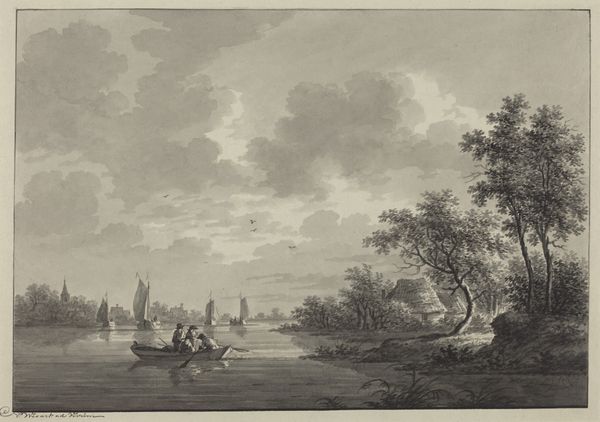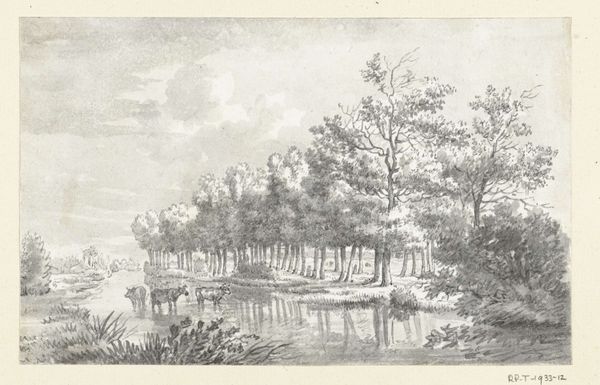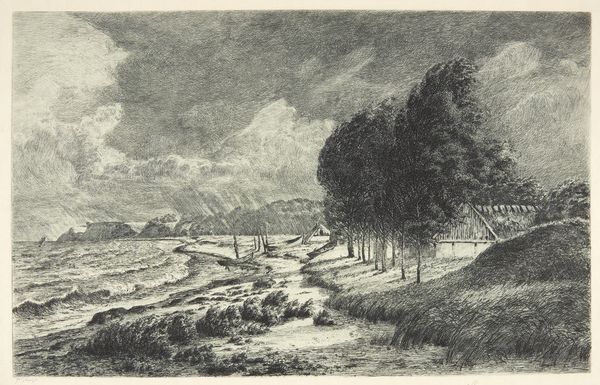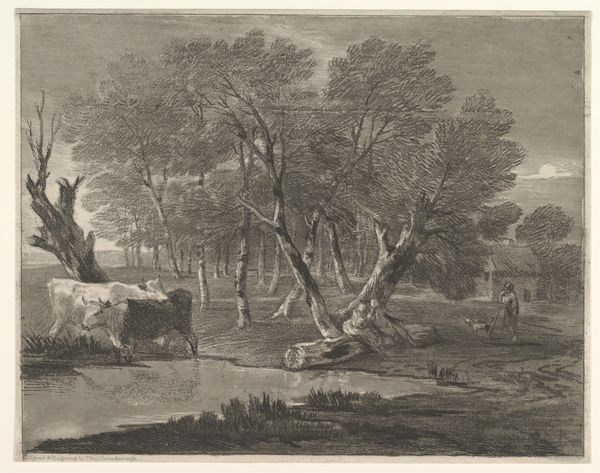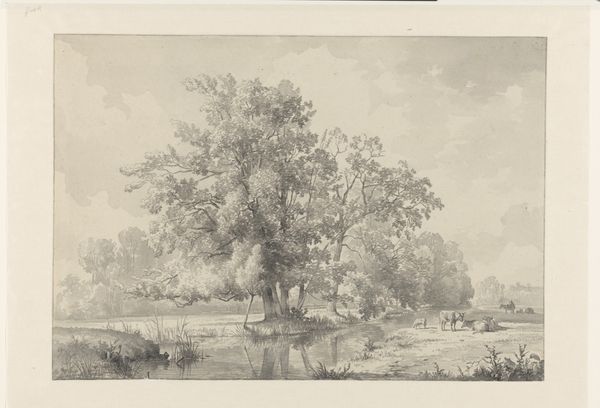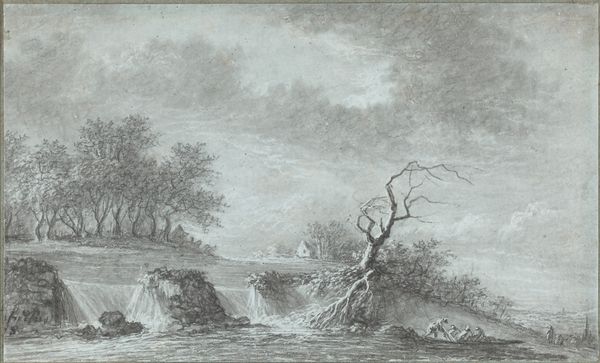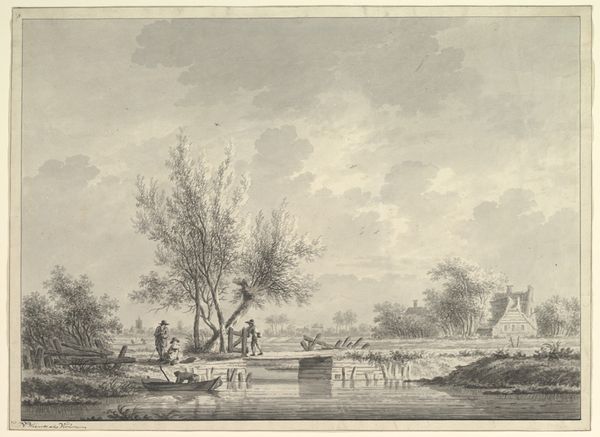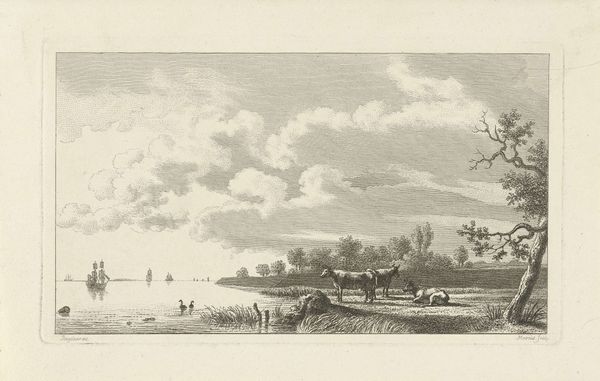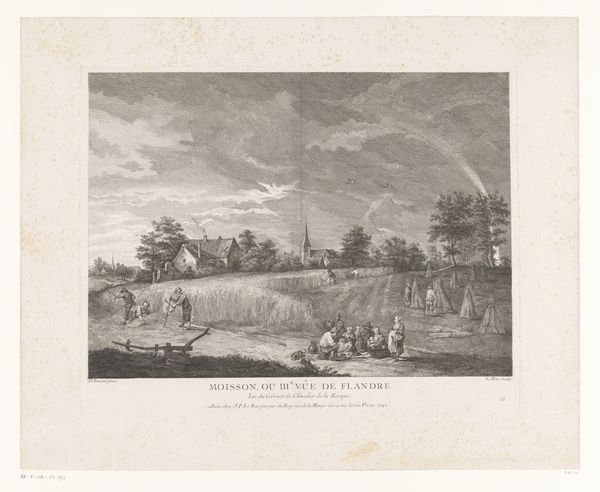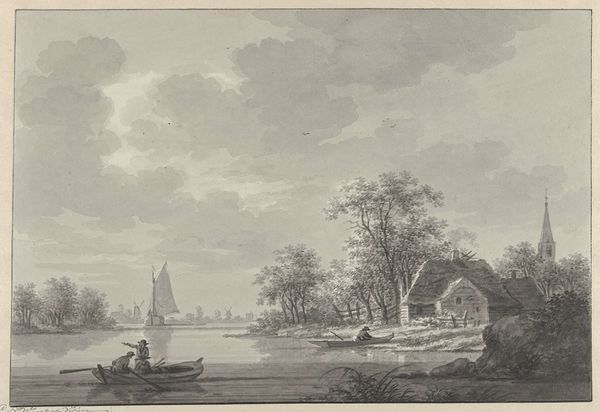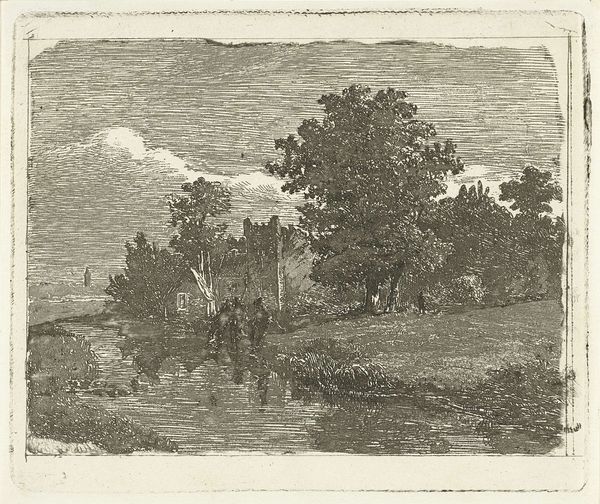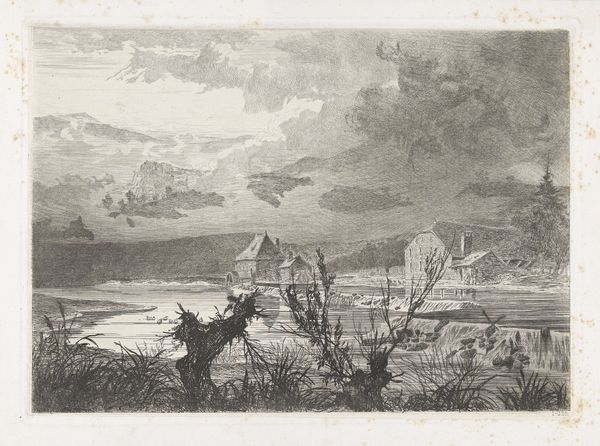
drawing, gouache, ink, pencil
#
drawing
#
netherlandish
#
dutch-golden-age
#
gouache
#
landscape
#
ink
#
romanticism
#
pencil
#
15_18th-century
Copyright: Public Domain
Editor: This drawing, "River landscape in the moonlight" by Hendrik Spilman, created with pencil, ink and gouache, gives me a rather tranquil feeling despite the darkness. What's your perspective? Curator: Immediately, my focus is drawn to the artist's labor, evident in the layering of materials: the pencil for the initial sketch, the ink for definition, and gouache to establish the luminescent quality. The moonlight isn't simply represented; it's constructed through Spilman’s manipulation of these base materials. Consider, also, who would have commissioned or consumed such a drawing? What kind of market supported its creation? Editor: That’s interesting. I was focused on the serene quality, but the process is important too. The market though… I’m not sure I follow. Curator: These landscapes became popular, almost like commodities. Were they accessible only to a certain class of patron who had access to resources and materials? Are these works simply capturing the essence of the land, or are they bound up in the systems of production of labor from this era? How might its creation reinforce or subvert existing power dynamics? Editor: So you’re saying the seemingly simple depiction of nature might reflect the social and economic realities of the time? Curator: Precisely! Even the paper itself – where was it sourced? What labor was involved in its creation? Each element contributes to the bigger picture of how art functioned within Dutch society. What at first appears Romantic or idyllic in nature could actually be about the materiality and context that the artwork can suggest. Editor: That shifts my perspective considerably! I wouldn't have considered the social and economic factors embedded within the artwork's production. It certainly gives me more to think about regarding art from this era. Curator: Indeed, focusing on materials and modes of production encourages us to challenge traditional interpretations.
Comments
No comments
Be the first to comment and join the conversation on the ultimate creative platform.
